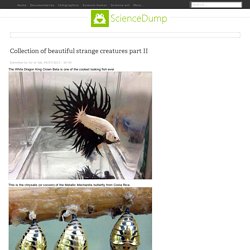

Living World - Tales from Te Papa. Craft Leaders: Joe Letteri, Visual Effects Supervisor. Working with Steven Spielberg, Peter Jackson and James Cameron, Joe Letteri has built the astonishing photoreal worlds and iconic CG characters of Jurassic Park, Lord of the Rings, King Kong, the Planet of the Apes series and Avatar and is currently working on the highly anticipated Avatar sequels.
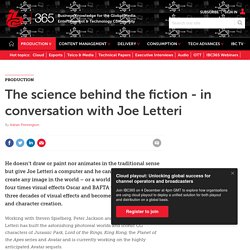
“Understanding how and why something happens, moves or works in the real-world gives you a deeper understanding of what make something look real in a virtual world,” he explains. “That has been the driving force behind the way I look at things. I want to see how far you can stretch the techniques and the technology in pursuit of realism.” He grew up outside Pittsburgh, Pennsylvania, and excelled at science, maths, astronomy and physics. Attending the University of California, Berkeley, he gravitated toward media and film. “I didn’t see a computer until I was at university,” he says. “This was my breakthrough.
Zoo animals for younger students. Welcome to Living Eggs New Zealand! - Living Eggs Living Eggs. Birds. Fish and Physics - Access classroom resources - Teach Ocean Science. StudyJams! Science Activities. ANIMALS. (8) Living Things Change: Crash Course Kids #41.1. Green lipped muscle dissection and understanding lesson.
Insects, spiders and very small animals. Carnivores, Herbivores, Omnivores and Food chain. Classroom in the parks. Classroom in the parks.
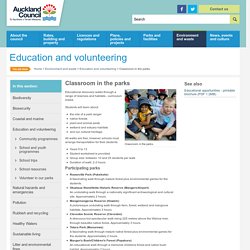
Educational discovery walks through a range of reserves and habitats - curriculum linked. Students will learn about: the role of a park rangernative forestsplant and animal pestswetland and estuary habitats and our cultural heritage. All walks are free, however schools must arrange transportation for their students. Years 5 to 13Student worksheet is providedGroup size: between 10 and 25 students per walkDuration of walk: 2-3 hours Participating parks Rooseville Park (Pukekohe)A fascinating walk through mature forest plus environmental games for the students.Otuataua Stonefields Historic Reserve (Mangere/Airport):An undulating walk through a nationally significant archaeological and cultural site.
Habitats. The mystery of the talking fish. PHYLOrules2013. A Community for Naturalists · NatureWatch NZ. Lesson Plan: Symbiosis and Predation Using Clips from Microcosmos. Symbiosis and Predation in the World of InsectsUsing Film Clips From "Microcosmos" Subject: Science/Biology (Symbiosis & Predation; Ants, Aphids, & Ladybugs) Ages: 5+; Elementary - High School.
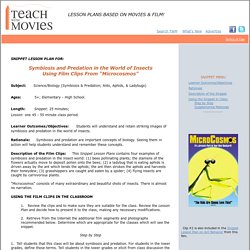
Length: Snippet: 25 minutes; Lesson: one 45 - 55 minute class period. Learner Outcomes/Objectives: Students will understand and retain striking images of symbiosis and predation in the world of insects. Great White Sharks 360 Video 4K!! - Close encounter on Amazing Virtual Dive. Fabulous facts poster series: Auckland educational resources. Native birds The native birds poster features facts about kiwi, tūī, tīeke/saddleback, takahē, kōkako, bellbird, hihi/stitchbirds and kererū/New Zealand wood pigeon.
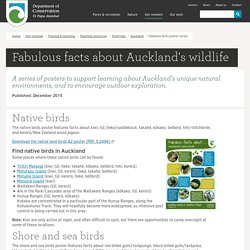
Download the native land birds A2 poster (PDF, 5,240K) (opens in new window) Find native birds in Auckland Some places where these native birds can be found: The Wildlife Research Institute. North American Bear Center - Home. Nature Soundmap. How Wolves Change Rivers. Wolves Introduced To Park To Revitalize Ecosystem. George Monbiot calls it one of "the most exciting scientific findings in the past half century.

" That's a lofty statement, but one that he's willing to back up. The scientific finding that Monbiot is referring to is a 'trophic cascade,' in which the reintroduction (or removal) of the top predator of an ecosystem drastically changes said ecosystem in numerous ways. In 1995, wolves were reintroduced into Yellowstone National Park after having been absent for several decades. As a result, an incredible change was now underway. With wolves back on the scene, the deer population reduced. Incredible Science Online. New Zealand Bird Rescue Charitable Trust. Deep Sea Explorers Stumble Upon A Creature They Can Hardly Believe Is Real. While there’s no shortage of weird and wacky ideas in science fiction about what creatures from other planets might look like, few are quite as remarkable as those that can actually be found right here on Earth.
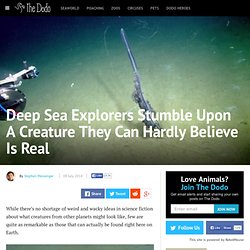
Recently, a team from the Nautilus Live expedition piloting a remotely operated vehicle (ROV) happened upon one of the most fascinating-looking lifeforms in the world -- this rare, purple siphonophore roving through the ocean’s depths. Even the experienced deep sea explorers, well-acquainted with the marine animals, had a hard time accepting that what they were seeing was really real.
“Wow. Okay, that’s awesome,” says one ROV operator. “I can’t believe that’s a living thing.” Amazingly, although this appears to be a single jellyfish-like animal, it is in fact a roving colony made up of thousands of individual organisms, called zooids, each contributing to the whole. Deep Sea News writer R.R. 7,000 Kinds of Amphibians. Collection of beautiful strange creatures part II. The White Dragon King Crown Beta is one of the coolest looking fish ever This is the chrysalis (or cocoon) of the Metallic Mechanitis butterfly from Costa Rica The Male Moustache Fighting of the Emei Moustache Toad Sleeping red-eyed tree frog (Agalychnis callidryas)
